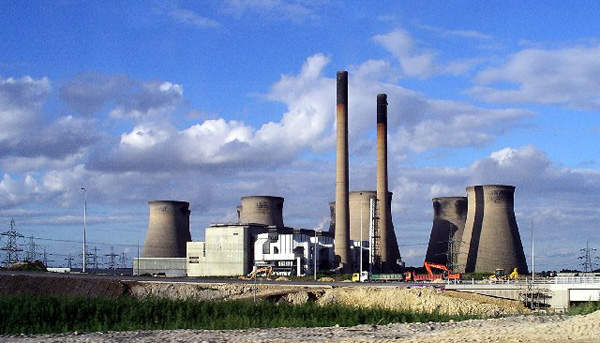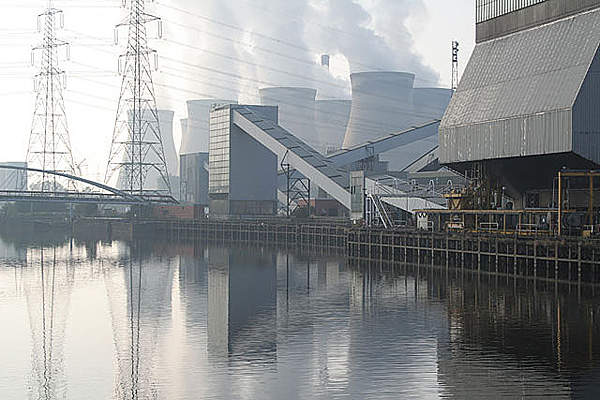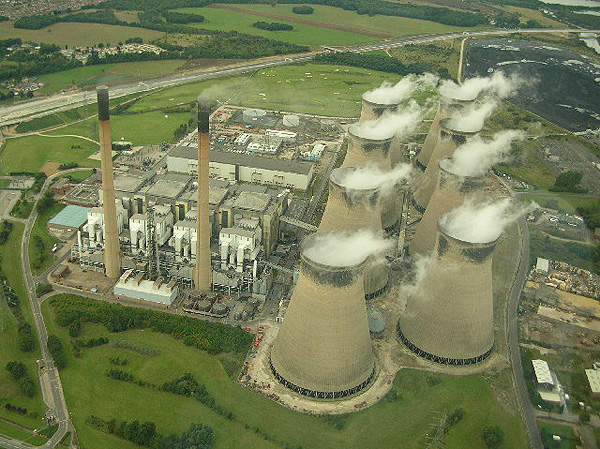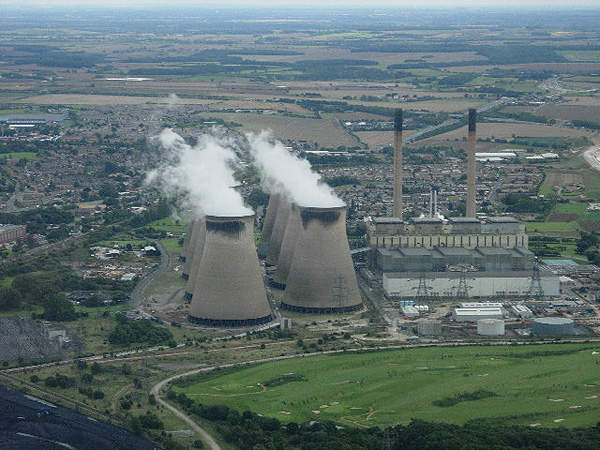Energy giant Scottish and Southern Energy (SSE) commissioned the UK’s largest carbon capture pilot plant at its coal-fired 2,000MW Ferrybridge Power Station in West Yorkshire, in November 2011. Known as CCPilot 100+, the plant is designed to extract about 100t/day of carbon dioxide (CO2) from the exhaust fumes. The CO2 captured is equivalent to 5MW of power generation.
The CCPilot 100+ project took two years to complete. It will conduct tests and develop a viable technology for carbon capture by 2013.
The CCPilot 100+ project required an estimated investment of £21m. It received £6.3m in funding from the Department of Energy and Climate Change (DECC), Northern Way and the Technology Strategy Board (TSB) in March 2010.
SSE collaborated with Swedish utility Vattenfall for the project. Doosan Babcock, UK Coal and Siemens provided the front end engineering design and construction services. Doosan Power Systems supplied its carbon capture technology for the pilot facility. University of Sheffield, University of Nottingham, University of Edinburgh and University of Leeds are the research partners.
West Yorkshire-based plant’s history
The coal-fired power station is located in West Yorkshire on the banks of the River Aire. A 125MW Ferrybridge A power station was built at the site in 1924 and was operational until 1976. A 300MW B station generated power between 1957 and 1992.
The current 2,034MW Ferrybridge C became operational in 1966. The power station was the second largest polluting plant in the UK in 2003. It started using biomass as secondary fuel in the same year to reduce emissions.
Ferrybridge C power station details
The power plant consists of four 500MW power generation steam turbine units and an additional 34MW capacity gas turbine. The two 198m tall chimneys and eight 115m cooling towers are considered to be the largest in Europe. The boilers were equipped with boosted-over-fire-air technology in 2008 to reduce NOx emissions.
In October 2011, the Department of Energy and Climate Change permitted SSE to build a 108MW capacity multi-fuel power plant at the existing site. It will use waste wood, biomass and other fuels derived from wastes for power generation.
CCPilot 100+ plant and processes involved
CCPilot 100+ at Ferrybridge was built to capture carbon dioxide (CO2) produced by burning of fossil fuel. A flue gas desulphurisation (FGD) unit was built at the power station in August 2011.
The system, provided by ERG (air pollution control), has a two-stage polishing tray scrubber tower and a direct contact packed cooler tower. It reduces the SO2 emissions and particulate concentrations from the flue gas by 95% at a rate of 30,000m ³/h.
The pilot plant will act as an intermediate facility between laboratory-scale and commercial-scale CC projects. It will demonstrate the efficacy of amine compounds on flue gases. It will also allow optimisation of a post-combustion carbon capture process and allow researchers to develop viable CC technologies and scale-up models.
Polished flue gas from FGD is passed through an amine solvent packed column of the post combustion carbon capture unit. It differentiates the CO2 from hydrogen and natural gases. The solvent reacts with CO2 and acts as a scrubber.
Around 90% of CO2 is expected to be removed from the flue gas. The solvent is heated to release CO2 in a different column and is further recycled. The pilot plant tests only the carbon capturing and scrubbing part of the CCS chain. The CO2 is not stored but cleaned and exhausted through the flue stack.
Suppliers involved with SSE’s carbon capture pilot plant
ERG also provided recirculation pumps, solvent storage tanks, control tools and ancillary instruments. KSB valves and Rotork IQ and IQT valve actuators were used for the FGD unit.
The CCPilot 100+ plant is sn entirely British project involving more than 20 suppliers – Powys Carpenter and Paterson (pipe supports), A J Metal Products (air receiver), Francis Brown (steel ducts), Pipework Systems & Installation (sampling systems and pipework), Howden (booster fan), Sinclair Stainless Fabrications (columns) and Silotank (GRP tanks) among others.
CCS programme in UK
SSE is developing a demonstration-scale full chain CCS system at its gas-fired Peterhead power station. The captured CO2 will be compressed to liquid form and transported via pipelines for storage in deep geological rock formations in the North Sea.
The UK is committed to decrease the GHG emissions by 34% by 2020 and by 80% by 2050. The country has geological advantages with offshore carbon storage facilities promoting commercial-scale CCS. The UK’s CCS Demonstration Programme is expected to have economic and environmental benefits and generate thousands of jobs.
DECC has allocated funds of £125m towards the R&D of the government-led CCS Programme between 2011 and 2015. The pilot plant serves the UK’s strategy to develop a cost-efficient CCS deployment by 2020. It will be used to test and develop technologies for commercial-scale demonstration of the CCS.
About £1bn is expected to be funded by the government to support CCS projects in future. The UK plans to develop about 300-400MW carbon capturing demonstration plants as part of the CCS Programme. A 2,000MW CCS project is anticipated in 2025.







